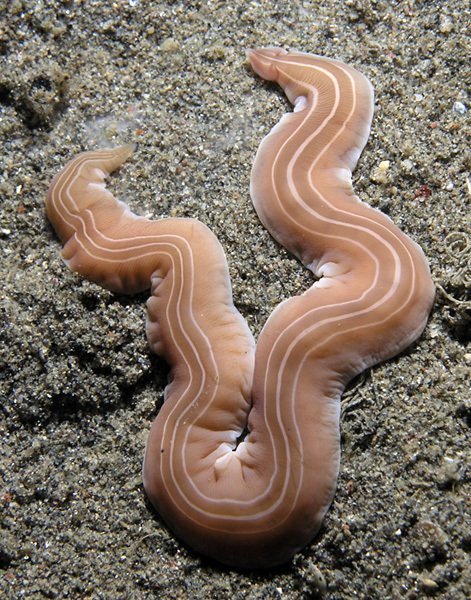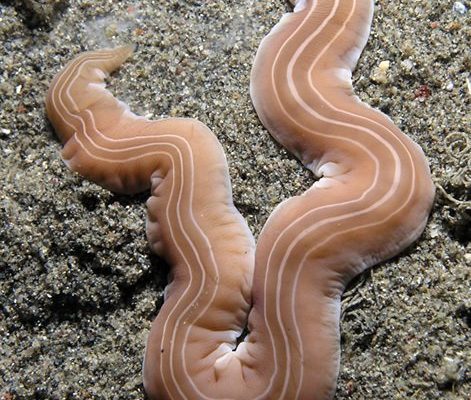
Understanding how ribbon worms react to environmental changes is like peeling an onion; there’s so much going on beneath the surface! From temperature fluctuations to variations in salinity, these worms show quite a bit of resilience. So, grab a cup of coffee, and let’s dive into the incredible world of ribbon worms and how they navigate what life throws their way.
What Are Ribbon Worms?
Ribbon worms, scientifically known as *Nemertea*, are soft-bodied, elongated creatures that can be found in various marine habitats, from coastal waters to deep ocean floors. They can range in size from a few millimeters to several meters long! Imagine a squiggly piece of spaghetti, and you’ve got a pretty good visual of what these worms look like.
Their bodies are remarkably flexible, which helps them navigate through different environments. They possess a unique organ called a proboscis, used for feeding and capturing prey. This adaptability is essential, especially in the face of changing environmental conditions. Understanding what makes up their anatomy and how it aids in their survival is crucial when discussing how they respond to changes in their surroundings.
How Temperature Affects Ribbon Worms
Temperature is one of the most significant factors that can impact ribbon worms. They are ectothermic animals, meaning their body temperature depends on the surrounding water. When the water warms up, ribbon worms become more active, often leading to increased feeding and reproductive behaviors. However, a sudden spike in temperature can also be detrimental.
In warmer waters, ribbon worms may experience stress, leading to decreased survival rates. For instance, if you imagine a ribbon worm trying to wiggle around in a hot tub as opposed to a refreshing swim in the ocean, you can see how that change could be overwhelming. The worm might try to adapt by burrowing deeper into the sediment, where it’s cooler, but this isn’t always a guaranteed escape from the heat.
**Key Points About Temperature:**
- Ribbon worms are ectothermic, relying on water temperature.
- Increased warmth can boost activity but also stress them.
- They may bury themselves to escape extreme heat.
Salinity and Its Influence on Ribbon Worms
Salinity level, or how salty the water is, plays a crucial role in the lives of ribbon worms. These worms are often found in brackish waters, where freshwater and saltwater mix. Changes in salinity can occur due to rainfall, evaporation, or human activities, and ribbon worms have some fascinating ways of coping with it.
When salinity drops, for example after heavy rain, the worms may expand in size. It’s like how you might feel bloated after eating too much salty food; ribbon worms absorb water to balance the changing environment. Conversely, in more saline conditions, they might shrink as they lose water. This remarkable ability to regulate their body’s moisture levels helps ensure their survival despite fluctuating conditions.
**Key Points About Salinity:**
- Ribbon worms thrive in brackish waters.
- They can absorb or lose water based on salinity changes.
- This ability helps them adapt to varying environmental conditions.
Responding to Pollution and Habitat Changes
Like many marine organisms, ribbon worms face threats from pollution and habitat destruction. They can be indicators of ecosystem health, making their reactions to pollution particularly telling. For example, if a ribbon worm population decreases, it could signify that the ecosystem is under stress from pollutants like heavy metals or plastics.
When exposed to pollutants, ribbon worms may exhibit changes in behavior or physiology. They might burrow deeper into the sediment to avoid contaminated surface waters or even change their feeding habits based on the availability of clean food sources. It’s a little like how people might go for safer, healthier food options when they sense that something is off in their environment.
**Key Points About Pollution:**
- Ribbon worms can indicate the health of marine ecosystems.
- They adapt to avoid polluted areas, affecting their behavior.
- Changes in their populations can signal ecosystem stress.
Behavioral Adaptations to Environmental Stressors
Ribbon worms have developed some fascinating behavioral adaptations that help them cope with environmental stressors. When faced with threats—be it a predator or a sudden change in their habitat—they often utilize their remarkable elasticity. This ability allows them to hide quickly by burrowing into the sand or mud, effectively camouflaging themselves from danger.
Moreover, some species of ribbon worms engage in a behavior known as “swimming,” which involves undulating their bodies through the water column. This movement can help them escape unfavorable conditions or seek warmer or cooler waters. Imagine a worm taking a quick dive into a cooler pool on a hot beach day—it’s all about finding that comfort zone!
**Key Points About Behavioral Adaptations:**
- Ribbon worms can quickly burrow to hide from predators.
- They might swim to escape unfavorable environmental conditions.
- These adaptations help ensure their survival in changing habitats.
The Importance of Studying Ribbon Worms
Studying ribbon worms offers valuable insights into marine ecosystems, especially as climate change continues to alter our oceans. By monitoring how these worms react to various environmental changes, scientists can better understand the overall health of marine life.
As indicators of ecosystem health, ribbon worms can provide early warnings about pollution and habitat changes. For instance, if a specific species starts to decline, it might signal that something bigger is amiss in that ecosystem. This knowledge can then prompt conservation efforts to protect vulnerable marine environments, ensuring that not just ribbon worms but a host of other species can thrive.
**Key Points About Their Importance:**
- Ribbon worms are indicators of marine ecosystem health.
- Studying them helps scientists understand environmental changes.
- They can signal the need for conservation efforts.
Ribbon worms are more than just fascinating creatures in our oceans; they are barometers of environmental health. From their responses to temperature and salinity changes to their ability to adapt to pollution, these underestimated animals play a crucial role in maintaining ecological balance.
By delving into how they react to their environment, we not only appreciate their unique adaptations but also gain insight into the broader health of marine ecosystems. Keeping an eye on these squiggly wonders can help us better understand the impacts of climate change and pollution, guiding our efforts to preserve the treasures of our oceans. So, the next time you’re by the shore, take a moment to consider the ribbon worms beneath your feet—tiny, resilient survivors navigating a world of change.

